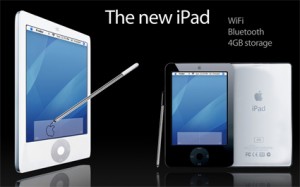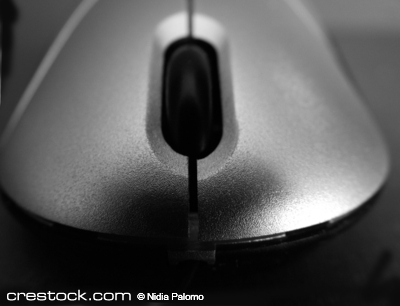
- The new iPad
by Rebecca Hong
Steve Jobs is my favorite presenter for his ability to get his message across so clearly and effectively. I love listening to his commencement speech in Stanford University entitled “Stay Hungry Stay Foolish”. This morning I listened to Steve’s iPad product launch presentation. Steve Jobs proves himself to be a great presenter again. I would like to evaluate his presentation from a presentation skills perspective. I won’t touch upon the technical side even though I am fully sold that iPad is a phenomenal gadget.
Let me tell you why I think Steve Jobs is a great presenter.
1. Well-designed Structure/Organization
A great presentation starts by having a well designed structure/organization. So let’s first look at the structure of his presentation; the opening, body and closing. Please pay special attention to some very good transitions in between points.
Opening
Steve Jobs first overviewed of the company status-mainly good news about product sales and the large customer base. Then he threw out a question: “Is there a 3rd category device between a smart phone and a laptop?” The answer is: iPad.
Body
- Overview of what iPad can do.
Transition: “So that gives you a little overview of what the iPad can do, but it’s nothing like seeing it. So I’d like to show it to you now.”
Demo of what iPad can do.
– web surfing: New York Times, Buy movie tickets, National Geography
– emails
– photos
– calendar
– address book
– maps: Google Map
– video: Youtube, TV, movies,
II. Hardware features of iPad
III. 3rd party software features of iPad: App Store (presented by Scott Forstall, Apple Senior VP of iPod Software)
Demo of online game
Demos from several 3rd party software developers/content providers
IV. New App: iBooks (Steve Jobs back to present)
Overview
Demo
Transition: “Now, something very exciting: the iWork.”
V. App: iWork for iPad (presented by Phil Schiller, Sr VP Product Marketing)
Overview
Demo
– Keynote
– Pages
– Numbers
VI. Sync with iTunes (Steve Jobs back to present)
VII. Wireless networking in US and internationally
VIII. Pricing
First gave the product benefits: what iPad can do, Apps, iBook App, iWork App.
Then gave a price in pundits’ opinion: $999
Then shows the actual price: $499 and the more expensive models with higher capacity
IX. 3 Accessories
– a dock to view photos
– a key board dock
– a case for protection and serves as stand
X. Video of iPad
Closing
Echo the opening
Call for action: get your hands on it to feel it.
2. Subtle Salesmanship
Steve Jobs utilized this product launch opportunity not only to introduce the new product but also to persuade the audience to own it by adding many salesmanship lines. Let’s see how he made his sales pitch subtle but effective.
Example 1. After the demo of what the iPad can do, Steve said, “I have to say, though, watching it is nothing like getting it in your hands and feeling it right underneath your fingers.” This is to tell the audience that you need to own this gadget to really feel its charm.
Example 2. When it’s time to unveil the price of iPad, Steve first recapped the product benefits: what iPad can do, Apps, iBook App, iWork App. Then he didn’t tell the price right away. But to build some suspense and also contrast, he gave a price in pundits’ opinion: $999. Of course, the actual price is much lower: $499 for the most basic model and higher prices for other more advanced models. Here Steve used two skills. The first one is to mention benefits before the price so that buyers are reminded of the wonderful benefits of this product first and then are more likely to accept the price. The second skill Steve used is to give a higher price first and then the real lower price. This contrast of prices naturally makes the buyer feel the actual price is really low and it’s a great deal to get it at this price.
Example 3. At the end of the speech, Steve called for action to own this product. “So we’ve got a hands-on area next door, we’d like to get you to get your hands on an iPad because when you feel all this power, and this much fun and the internet in your hands, you will never want to go back.” This call to action is effective because it is not a hard sale. Rather it appeals to the emotions: the desire to feel, to have fun, and the need to try something cutting-edge.
3. Echo between the Opening and the Closing
When you first listen to the opening of the presentation, you might think that it seems a bit irrelevant to the main topic of this presentation, the iPad launch. But when you listen to the closing of the presentation, you will realize that actually the opening is well structured to serve as a set up for the closing. The opening’s main message of Apple having a massive customer base links to the closing message that this massive customer base is exactly the customer foundation for iPad and why iPad will take off strong in the market.
Let’s have a close look of how the opening and the closing echo with each other.
-
Opening: “Everybody uses a laptop or smart phone… Is there a room for the 3rd category of device in the middle? Something between a laptop and a smart phone?”
Closing: “So let’s go back to the beginning. Do we have what it takes to establish a 3rd category product, an awesome product that’s in between a laptop and a smart phone…We think we got the goods. We think we’ve done it.”
-
Opening: “A few weeks ago, we have sold our 25millionth iPod.”
Closing: “Because we’ve shipped over 75million iPhones and iTouchs, there are over 75 million people already know how to use the iPad.”
-
Opening: “A few weeks ago, we announced that a user downloaded the 3 billionth application from the App Store.”
Closing: “Users have downloaded 12 billion products from these stores (iTune, iApps and iBooks), so we are at scale and we are ready for the iPad.”
-
Opening: “We’d like to kick off 2010 by introducing a truly magical and revolutionary product today.”
Closing: “Now the iPad, if you can sum it up, is our most advanced technology in a magical & revolutionary device at an unbelievable price.”
4. A Strong Tagline
A good speech, no matter how long or short it is, should be able to be crystallized into a sentence or even a phrase, which we call a tagline. Steve Jobs gave this iPad a clear and strong tagline:
“iPad is a truly magical and revolutionary product.”
(Short version, used in the opening)
“iPad our most advanced technology in a magical & revolutionary device at an unbelievable price.”
(Longer version, used in the closing)
This longer version tagline perfectly crystallized the features of iPad: advanced technology, magical, revolutionary and the affordable price.
However, I do have some recommendation to make this tagline stronger. The problem with the current tagline is that it puts the focus on the most advanced technology, which is too technical oriented. I would recommend to change it to focus on its emotional appeal:
“iPad is a truly magical & revolutionary device with our most advanced technology at an unbelievable price.”
(recommended tagline)
The changed version puts the emotional appeal of “a truly magical & revolutionary device” as the focus in this tagline to make it more user oriented rather than technology oriented.
5. Well Paced Speed and Great Use of Pauses
If there is one thing that differentiates Steve Jobs from other great speakers, it is his speaking speed. Steve’s speaking speed is about 100-120 words per minute while a normal English speaker’s speed is about 210 words per minute. This means Steve is 50% slower when he speaks. Why does Steve Jobs speak slowly? Because he enunciates each word clearly and he takes time to emphasize the key words and messages. The effect of his slow pace is that audience will feel very comfortable following him without being rushed or missing anything he said. As a result he gets his message across successfully.
Here is an example of how he uses pauses effectively. When he made the statement that “Now the iPad, if you can sum it up, is our most advanced technology in a magical & revolutionary device at an unbelievable price”, Steve puts three pauses in this sentence to let the audience hear and get the three features clearly:
“Now the iPad, if you can sum it up, is our most advanced technology [pause] in a magical & revolutionary device [pause] at an unbelievable price [pause].”
6. Beautiful Selection of Words
Listening to a speech with beautiful words is like listening to a masterpiece of music. Steve Jobs is one of the speakers who carefully selects his use of words. He uses many adjectives in his presentations and metaphors to create mental pictures in audience minds.
Example 1. “This is around 18 months since its inception, 3 billion applications from App Store.”
Example 2. “The e-book app. Amazon has done a great job of pioneering this functionality with Kindle and we are going to stand on their shoulders and go a little further.”
7. Show of Emotions
A good presenter connects with the audience on a personal level by expressing his own emotions. Steve Jobs is such a presenter. Here is a good example: “We just ended our holiday quarter, our 1st fiscal quarter of 2010, with $15.6 billions of revenue. I don’t even believe that!”
8. Repetition of Key Lines
Steve Jobs knows the power of repetition to strike his main messages in the audience minds. Here are two examples:
Example 1. “By revenue, Apple is the biggest mobile device company in the world now… Apple is the #1 mobile device company in the world.”
Example 2. “Now the iPad, if you can sum it up, is our most advanced technology in a magical & revolutionary device at an unbelievable price.” (repeated once)
9. One Message per Slide
In all Apple’s presentations, you will see what it means to have one message per slide. Besides, the most important message is put in bigger font while narratives in smaller font. Here is one example:
Sample slide:
50,000,000
Visitors last quarter
10. Never Forget to Promote the Company/Brand
Steve Jobs smartly utilized the product launch opportunity to promote the company and build up its Apple brand. Here are two examples.
Example 1. In the beginning of the presentation, Steve Jobs gave a positioning to Apple: “Apple is a mobile devices company. That’s what we do.” If you think Apple is just a digital appliance company, then after listening to this speech, you know that to be specific, Apple is a mobile devices company.
Example 2. At the end of the presentation, Steve Jobs reiterated the competitive advantage of Apple: “We’ve always tried to be at the crossroad of technology and liberal arts, to be able to get the best of the both.” This is what differentiates Apple from other technical companies.
So the above ten skills were demonstrated by Steve Jobs in his 1.5 hour iPad product launch presentation. Steve is a role model as a highly effective technical presenter. But only seeing is believing. So go to www.apple.com to see it with your own eyes and listen with your own ears.








